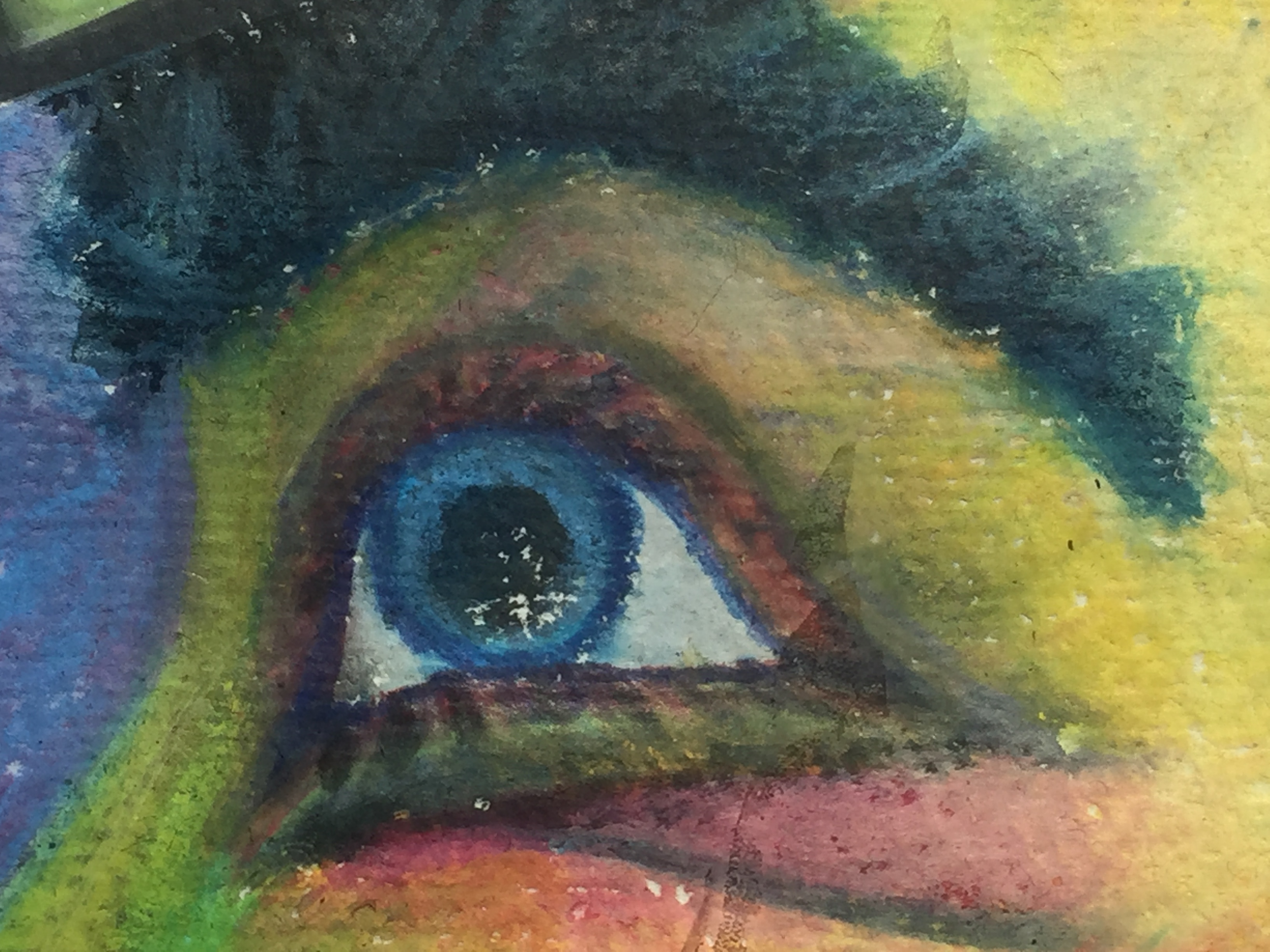What you see is what you are prepared to see
by Lothar Thiel (Project Manager) on 2017-05-14

An essay about the need of intercultural competence.
“My view on the strangers is correct, because I can see clearly how they are. By the way: I am not at all affected by other cultures.” Those are two fatal errors, first, because the human sensory organs don’t generate absolute truths, second, since the interdependencies between different societies and cultures nowadays run through all areas of life. Let’s start taking an example by having a look at our eyes and their job.
You are walking out of an eye doctor’s office. You are happy, because the specialist’s tests prove your own opinion about your visual organs: “My vision is perfect!”
But what does this really mean? Are you able to see, for example, an eruption of Tvashtar Paterae, a volcanic region of the Jupiter’s moon Io? Different answers are conceivable; here are only three of them:
1. You could say that this volcano is too far away from your terrestrial position to be seen with the naked or unaided eye. Saying this you concede, that for some purposes even your perfect eyes would need some help: an instrument, whose manner of functioning depends on the respective object, the observer’s perceptive ability and interest, and on the relation – including the distance – between the observer and his object.
2. You could also answer that you don’t give a damn about Tvashtar Paterae and its eruptions, and that therefore the impossibility to see it isn’t any sort of reason to contest the perfectness of your vision. But just deciding to answer in this way, you admit, that the evaluation of your vision varies with the importance of the object for your purposes.
3. You could also reply that for a lot of needs of your daily life your vision is completely sufficient, but that there are some cases in which you require additional means in order to obtain a clear perception.
It seems to be surprising that, in spite of the differences between these answers and the possible self-awareness of the answering individuals, they coincide – directly or indirectly – in the fact that the evaluation of a observing person’s vision depends on the relationship between the observer and his object. This applies at least in two respects:
1. The observer’s ability to perceive the properties of an object – and this means to distinguish them – depends on one side on these object properties themselves, on the other side on the visual discrimination of the observer’s eyes and finally on the distance between the observer and his observation object. This is the physical aspect.
2. The observer’s perception of the object may be sufficient, even if it doesn’t consider all its features, because the real number of object properties is often much higher than the number of properties which can become relevant for the observer. This may be considered as the psycho-physical or socio-physical aspect.
Applying this kind of reflection to the reception of microscopically small objects or even to other human sensory organs would lead to a similar result: The human reception of reality is highly relative, subject to a lot of conditions. And these conditions may even interact: In the field of quantum physics scientists found out that only the activity of observing a physical object may change its properties (the famous “Schrödinger’s cat”). But the interaction effects between the observer and the observed object are all the more important and complex, if the observed ‘object’ is a human being like the observer himself!
Many questions arise or at least should arise in connection to this topic, because the mutual assessment of the individuals is of fundamental importance for every society:
• Am I really able to understand objectively and to value the personality, the intentions and the behavior of other individuals?
• What about the criteria of my perspective and my way to assess or even to judge other people?
• Am I aware that the behavior of the other person may differ according to whether she feels observed (and by whom) or not?
• Am I conscious of the fact that the other person is observing me too and that her assessment of my appearance can contribute to a special way of behaving towards me? . . .
The society can only exist if there are some mechanisms provided to relieve the individuals as to the necessity of mutual assessment to a certain degree. So every society has developed certain norms serving as criteria for the mutual assessment processes between the individuals. Living inside the historically grown ‘normality framework’ of their own society, called culture, people often tend to consider the conformity or non-conformity of behavior to their cultural norms as quasi-natural respectively quasi-unnatural features of an individual’s behavior. The more the norms of a society have been internalized by its members and the more they identify with them, the less it still seems to be a question of evaluation or reflection whether a certain behavior and a certain feature of a person are ‘natural’ or not – it seems to become a simple question of perception: In fact many people believe to be able to see whether other people’s characters and ways to behave are ‘natural’ or not!
Of course this is a simplification, because it presumes a certain degree of uniformity which in fact is diminishing more and more within modern societies. It is also a simplification, because in each modern society the different social groups, economic and political entities and even generations have their specific subcultures. And last but not least, the notion of individual autonomy, being a fundamental cultural value of modern societies, is incompatible with the idea of total cultural streamlining.
Culturally based perception patterns, however, still play and will continue to play a key role within the communication processes of every society. Nevertheless this fact may become nowadays more and more a source of problems. With reference to the beginning of this essay: Your vision is good if you are able to distinguish the essential features of the object of your interest. If you need, for example for work reasons, to communicate or even to cooperate with people who don’t share your own cultural values and norms, applying these standards may not allow you to understand their ways of thinking and acting, because the distance between them and you is too far. Your unaided ‘cultural eyes’ need an ‘instrument’: intercultural competence (ICC).
But ICC doesn’t not only consist in knowledge about other cultures. The concrete way of a ‘stranger’s’ thinking and acting towards you is far from being only a simple product of his culture: It depends as well on his individuality, the situation, his social role and professional functions, but also on the way how he perceives you and his presumptions about your view at him.
Therefore ICC means above all the readiness and the ability to envisage situations in which given rules of interpretation and acting must fail, because those situations depend on too many unconscious and interdependent conditions: Especially because the interacting individuals from diverse cultures are at the same time observers and ‘observation objects’. And that means also that their actions are objects and at the same time consequences of the mutual observations and assessments. In other words: The topic of intercultural understanding is not only the person from the different culture (different from what?), but the relationship between at least two individuals from different cultures, each one being at the same time observing (the other one), observed (by the other one) and interacting (with the other one) as a result of, and as a base for mutual observations and interpretations within different orientation systems. So ICC cannot be a tool to prevent uncertainty; it is the readiness and ability to deal with it, because within the ‘cloud’ of intercultural relationships the emergence of ambiguity is principally unavoidable.
The increasing multicultural composition of enterprises, organizations and whole societies includes the risk of conflicts due to cultural diversity as well as the risk of leaving the enormous potential of diversity for common purposes unexploited. That is why nowadays it is so important that we occupy ourselves with the understanding of intercultural competence, in general and as to the relationship between possible partner countries and cultures. Therefore we – the « trait d’union » team – invite you, the young people of all countries and cultures, as well as your teachers, trainers, group coordinators, to enter in an active mutual communication and cooperation: not next year, not in two months, but now!
Best regards
Lothar Thiel
Project Manager of « trait d’union »
Contact: lothar.thiel@traitdunion.online





Rosella Baldelli
Liceo Sesto Properzio, Assisi/Italy on 2018-01-16